Reading Time: 12 Minutes
For any marketing role I’ve been in and with any marketer I talk to, metrics and measuring marketing success is a key issue. We’re often asked about the number of leads we’re going to generate or how many people we’ll get to an event. These are the wrong metrics for two reasons. Firstly, they only relate to one step in a customer’s decision journey. Secondly, they demonstrate that marketing is too narrowly defined. In this month’s roundtable we discussed the better (strategic) marketing metrics to use, how to take your colleagues with you and what metrics you need to take into the boardroom. ~ Rachael Wheatley, Master Practitioner | Watertight Marketing
Listen to the session podcast here
56-minute roundtable discussion on what skills a marketing director needs.
The Four Flow Foundations are Watertight’s key organising lens for the business. Bryony started by sharing a few thoughts relating to this framework.
Think first about your time horizons
The Third Flow Foundation answers the questions: when, and is it working? It sits on the operational side of our model and is all about Discipline. You’re looking to plan and measure in quarterly and monthly intervals.
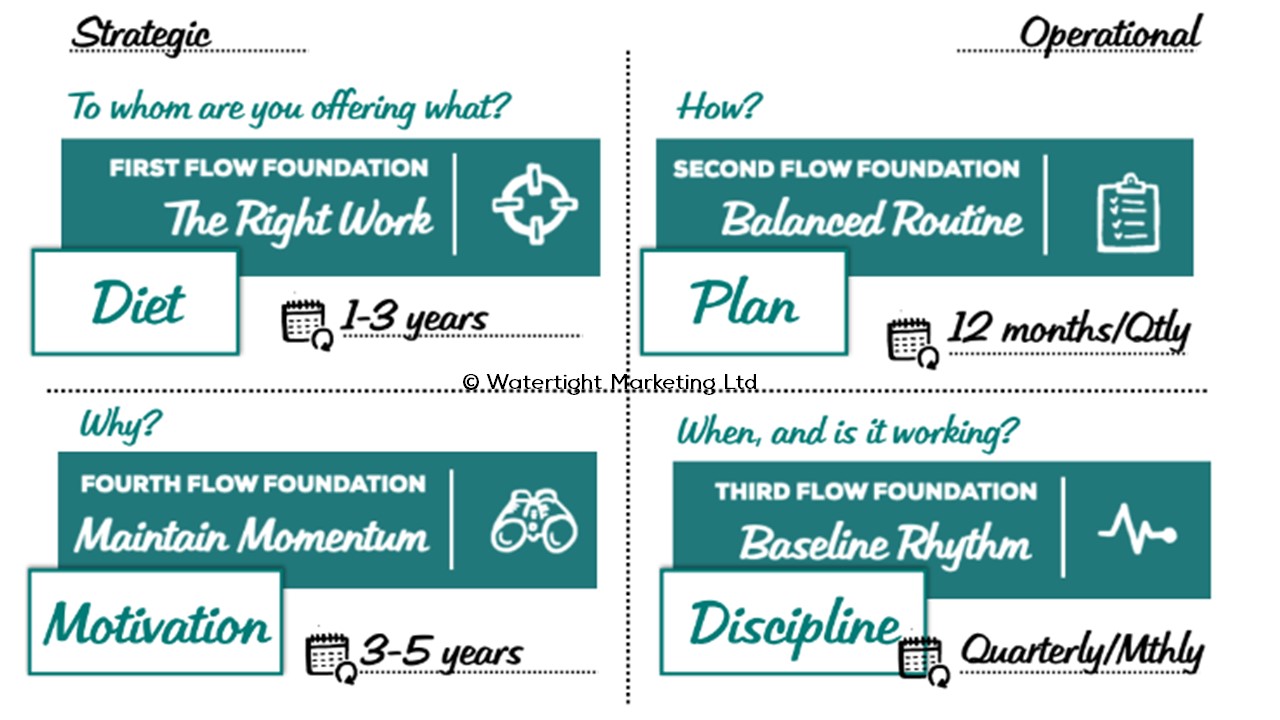
The person in the marketing team best suited to this is the Regulator. This is the person in our marketing four hats model. The Regulator loves process, likes to keep the drum beat of marketing, seeks improvement and so is the best person to focus on measurement. See: The four hats of a marketer? as per See: What shape is your marketing budget? in this blog https://watertight-thinking.com/2022/03/budget-buy-in/
Often in businesses you see people working in sprints to test different marketing activities. The idea is to learn from that testing and then tweak things accordingly. However, this can translate in marketing to trash and burn because those activities are not always given long enough to know if they’re successful or not.
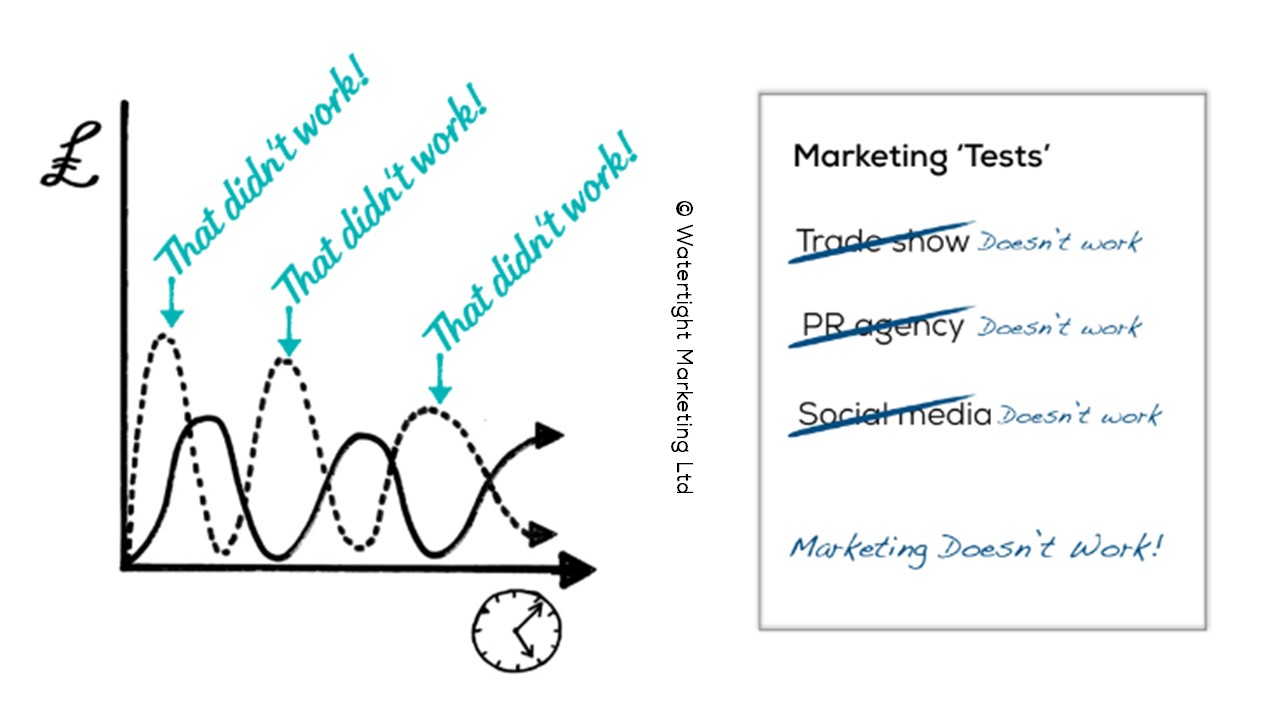
So, time horizons are the first thing you need to look at in relation to metrics. False time horizons only serve to make people think marketing doesn’t work because marketing activity isn’t given the time it needs. Set expectations of time horizons within which you believe activities will show a return, the time period over which someone goes through their decision journey.
What you’re looking for is the minimum time it will take for someone to move from Awareness to Loyalty (the time horizon) and the intervals at which you will check the progress they’ve made. If you have a two-year timeline to purchase, six monthly check-ins would be appropriate. If it’s a six day timeline, checks on progress will be more often. There’s no point in checking every day if it’s a longer time horizon; you won’t see the needle move.
The key question to ask here is: what is the key measurement interval which matches the pace of our customers?
Volume on its own is not a good measure of marketing success
There are three different metrics covered in Chapter 10 of Watertight Marketing:
- Volume – what can we count?
- Movement – is there progression in the decision journey?
- Outcome – what’s the bottom line?
To show these three different types of marketing metrics, look at:
- Volume metrics relevant to each step (e.g. the number of website visits which would indicate a prospect is at Awareness; the dwell time reading a blog which would indicate Interest; the number of downloads of an e-book which would indicate Evaluation, and so on);
- Ratios between the steps (i.e. the percentage of people who move on to the next step, who go from a website visit to read a particular blog, and then go on to download the e-book);
- Decision time horizons and measurement intervals
And using these measures, work out:
- The total cost of gaining a customer (or user or employee) – the investment
- The true value of a customer (or user or employee) – the return
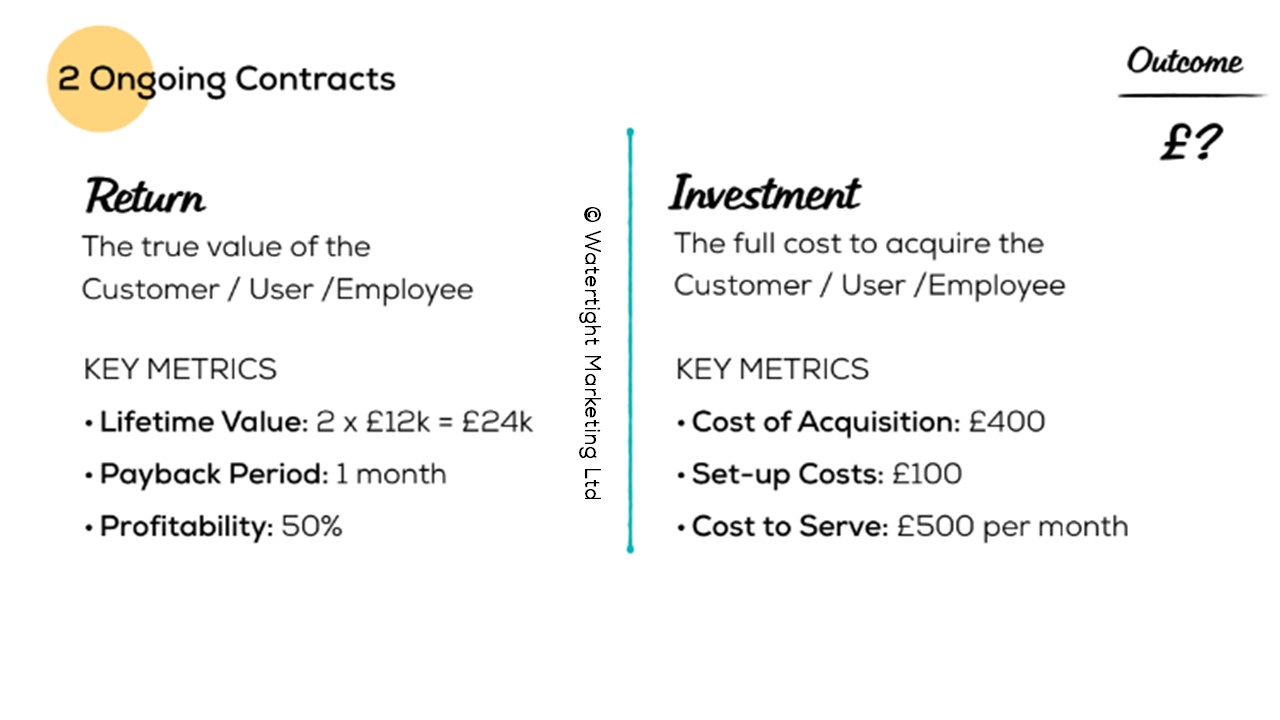
However, this will only be possible if you have tools in place that move your customer all the way through their buying decision.
The end game for marketers is a chart that shows volume, movement and outcome for each step. This is what we’d typically put up at a Board meeting, showing objectives and actuals.
If you’re not hitting volumes, you’d usually spend more money on ‘taps’.
If the movement (ratios) are too low, your tools aren’t effective enough so you need to think through how these might be improved.
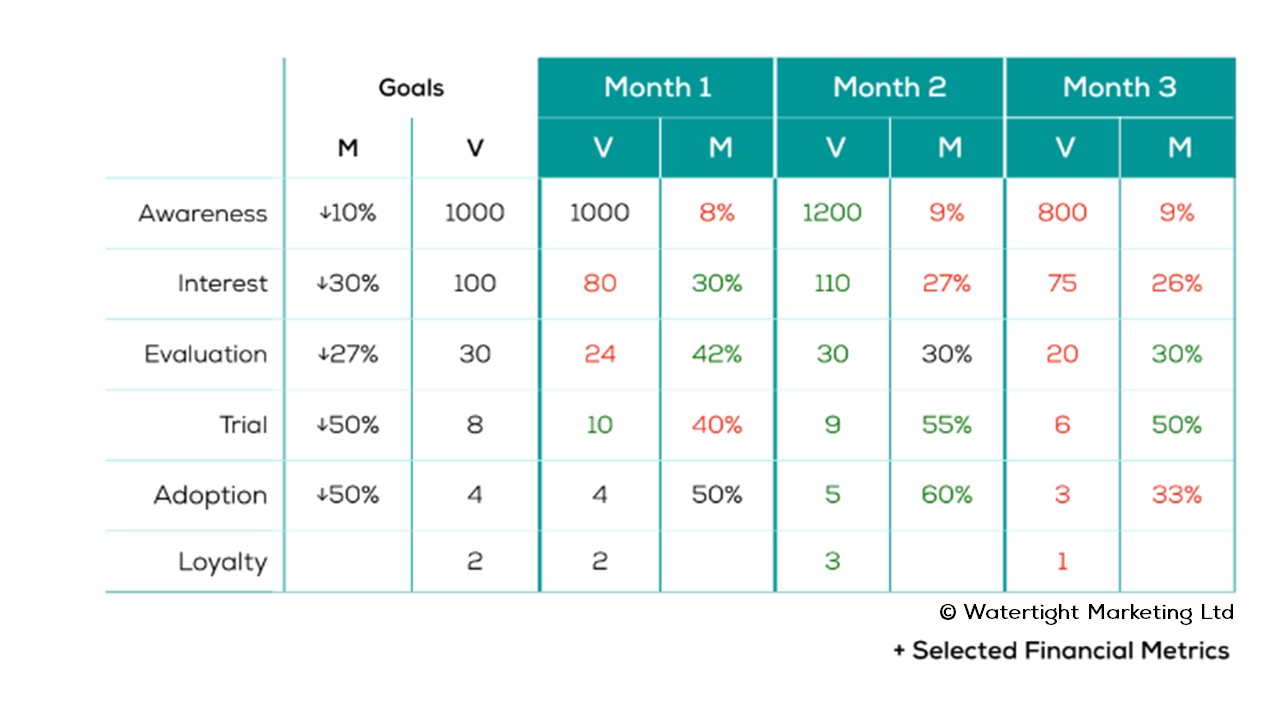
Why movement is the key metric
If you’re measured on the numbers of leads you generate, have a word with whoever’s put that measure in place and get them to read Chapter 10 of the book. These kinds of measures – on their own – are vanity metrics. It is the movement metrics that show people are progressing through the buying decision and therefore how effective your marketing, sales and service is.
Volume measures where people are in the journey. Work with your marketing colleagues to increase these.
Movement indicates a choice they’ve made to move to the next step. Work with your sales and service colleagues to understand these ratios.
Outcomes relate to return on investment. Work with your finance colleagues to understand what it is you need to deliver and how you can gain the data and insight to demonstrate this.
Find out if measurement is something you need to work on by taking our test: www.watertightmarketing.com/test. If Flow Foundation Three comes up as wanting, this metrics piece could be really powerful for you.
What mistakes do people make with metrics?
Peter Baynes answered Bryony’s question first: Well obviously measuring too early. And then measuring too much. You say, Bryony, to select a KPI for each stage, but I often see too many metrics at awareness and interest stage.
Bryony Thomas: Because people can measure it, they do.
Peter Baynes: Exactly. The other mistake I see is people patting themselves on the back for vanity metrics – volume – which usually comes down to the number of leads. What’s often missed is the quality of leads. You might only generate three leads, but if they all close for £100K the outcome is good even if the volume of leads on the face of it looks poor. And marketers often work in compartments; they don’t see what happens next.
Bryony Thomas: They’re operating blind, then. If you were door stepped by someone in business who asks: you know that event we went to last week, how many leads did we get? I wouldn’t answer the question on its own. I would always put it in context of the ratio and the journey. So going back to what we talked about earlier, instead of saying we generated 100 leads from that event you say: we generated a £12K deal value if the conversions we’re aiming for work. Don’t answer a metrics question with a volume answer in isolation.
Peter Baynes: And, when a lead is delivered, don’t forget to report on all the touchpoints. That may show we first got that contact at an event five years ago, they attended a webinar three years ago, we went on these sales visits. People often look at metrics and want to attribute; where did that lead or contact come from? With a considered purchase it’s always multi-touch. Report those multi-touches, then you can demonstrate the value of each activity. But, it’s not easy.
Bryony Thomas: It really isn’t easy! Part of the reason people don’t do this is because they want it to be precise. And I don’t think it can ever be absolutely accurate. People like volume metrics because they can count them. Other metrics are more predictive and take a bit of thought and insight; you need to have an opinion as to whether it’s good, bad and what the issues are.
There’s an interesting point about attribution. I talk about last touch bias in the book. People say: the telemarketing’s working, let’s switch off the PR and then you phone people and they’ve never heard of you because you’ve turned off the PR.
Cheryl Crichton: Yes – and I’d also add, going back to what I see going wrong, people don’t plan early enough for metrics and don’t correlate them to objectives. I’ve just done a piece in the Make Marketing Happen Club about how to brief external suppliers. There’s a section in there about how to measure this project. Think about it early enough and be realistic as you plan a project.
If you don’t think about it, when asked, you won’t know if it’s working. My point is about having that metrics conversation early on so you can agree what success looks like.
Bryony Thomas: There’s an interesting conversation in the chat about marketers measuring blind. I’d be interested to hear from you Paul – I know you come from sales background.
Paul Jolley: What I’m trying to create is customer centricity – a seamless integration of marketing, sales and customer service. I can’t understand why organisations aren’t all focused on the customer. It’s not a marketing or sales task; we all have a stake in it.
Bryony Thomas: The main reason why people operate blind is because at a senior level, marketing is misunderstood. It’s too narrowly defined as lead generation and therefore metrics focus just on lead generation. The assumption is that if a lot of leads are generated, they will be converted. But if you’re generating the wrong kind of leads you won’t get the customers you want. If sales are not given the right tools, they won’t convert.
Paul Jolley: I don’t have that issue with my clients, because I explain it from the beginning: what it is we’re trying to achieve, why it’s important to consider the whole customer journey, how marketing will play along that whole customer journey and when it will interact with sales, customer success and account management. I start from the top down with MDs because you’ve got to get their buy-in. Most companies still think that marketing is about filling the funnel from the top and everything else will happen.
Bryony Thomas: There are a few interesting things to pick up on what Paul has said. It’s particularly tricky when reversing a marketing mindset into a business which is always established. It’s fine if you’re baking it in from the beginning. It’s harder for established businesses where marketing is a growth lever they’ve come to later than others, perhaps because they haven’t felt they’ve needed it or hasn’t worked previously. The other point you mentioned is around the journey and who owns it. The framework I shared earlier isn’t owned by marketing; it’s owned by the Board and each team needs to contribute the numbers and maybe the regulator type role in marketing brings those metrics together. And then you’d use it to point out where the focus needs to be to improve: better tools or maybe better collaboration with sales or service people.
It’s a team sport: linking sales, service and marketing
Melanie Osborne : Systems are not always hooked up. In a previous organisation I worked with, CRM didn’t exist. We did lead generation and events, contacts were handed over to sales teams, but despite trying to engage with them and find out what was happening with those leads, we heard nothing. Eventually, they might say they’ve been nurturing those contacts for two years. Then we’d find out six months down the line they came to an event which they’d heard about on social media. That wasn’t recorded anywhere so sales claimed it as their win.
Bryony Thomas: That brings up another point about how people are compensated. Metrics get skewed because of how people get bonused. You will often find that it works in sales people’s favour to downplay that marketing contributed to the sale because then they don’t have to share the bonus. It is a team sport; I’d encourage you to have a look in your organisation at the compensation structure because it can manifest the opposite behaviour of what you’re trying to get. You want your salespeople saying: “We’ve been nurturing this for two years, it’s been a real team effort. We’ve been sending them some blog posts, inviting them back to things and those tools were really helpful”. Often, because of the way their bonus is decided they say they did that on their own.
Liz Davidson: We have a challenge at the moment recruiting sales people. We’re looking at how to recruit, at what level and with what skills. We were having a conversation yesterday that if we want top people we need to pay £90-100K with commission on top. That is their incentive to skew the metrics but also means that if we’re going to set people’s salaries in a more distributive way, we might come across as a less competitive employer for sales people.
Bryony Thomas: That goes to time-horizons. Building on Rachael’s model of Doer, Regulator, Adviser and Change-maker and overlaying time horizons, I think sales people look to whenever their next commission window is (determined by how they’re paid). A Doer and Regulator look out to the next month, quarter and year. An Adviser looks 12 months out and a Changemaker looks 3 to 5 years out. Tying time horizons and commission together could help. I read a really interesting piece in a book recently on performance related pay being put in a time bank so part of the bonus was attached to customer loyalty. So you can build in longevity measures too. The main thing with any metric is to get people to look up and move people’s time horizons further out.
The role of marketing in many ways is to bridge the gap between the desire for excellence and the need for momentum. In the Flow Foundations piece, when I look at vision, often people are good at 10 years or what happens in 90 days – it’s the bit in the middle time horizon people find most difficult.
How does the business measure whether marketing is performing?
Peter Baynes: I’ve started working with a business and they needed to improve their awareness. The MD asked me how many leads I was going to generate. I replied that I thought we were going to talk about awareness so let’s talk about metrics relevant to that. Then of course in a few months, if the right marketing steps are in place, that would result in enquiries and then leads. Most marketers are still measured on marketing-qualified leads and that’s it. People look for volume, more leads, not quality.
Bryony Thomas: That’s often because it’s relatively available. Ratios are harder and could be disputed. I’ve seen on LinkedIn recently a lot of talk from marketers about a single source of truth. I have a real issue if anybody expects anyone to deliver this. Firstly because it doesn’t exist, and secondly it certainly doesn’t exist for any longer than five minutes. So the idea that a CRM, a marketer or any metric can represent the truth is crippling. If you try to get to that level of precision and the “truth”, you will never make a decision. You need a good enough view to do that – not perfection. And that view will be a collection of perspectives.
Peter Baynes: And I’d add, one of the most dangerous words in metrics is “leads”. When you go to an event you don’t have leads, you have contacts. Understanding that journey and how to properly label the point at which a customer really is in the journey is important.
Bryony Thomas: That goes back to volume metrics and making sure they’re only attached to an action that someone has actually taken through their own volition. Which means you can’t buy leads. An enquiry is something that somebody does. Whereas if you buy a database of people that you email, they can’t possibly be leads because they haven’t done anything. That’s the difference between someone who walks past your sandwich shop and someone who comes into your sandwich shop. The person who walks past could be a customer but they’re not a lead just because you might like to sell to them.
Watertight Wisdom
What’s worked for us
Ideas from the group about how to use metrics:
- Be ratio obsessed and volume aware. Ratios tell you more about a customer’s progress through a decision journey towards buying from you. Measure these since they’re a truer indicator of marketing success. Volumes indicate that people are standing on stepping stones but on their own are vanity metrics!
- Look up and out. Encourage people to look up and move people’s time horizons further out.
- Understand the customer journey. Always ask: what happens next, what action will the prospect take? Customers don’t walk in a straight line; they meander or zig-zag through their journey. You can’t create useful metrics without understanding the customer journey.
- Be prepared to recommend metrics for each stage of a customer’s journey. Make sure metrics are tied to goals. Split out things you measure by the steps of the journey. Then decide the key one in each step.
- Next step selling. As a marketer don’t just deliver the trade show, make sure you map the next tool and the next. Let people know it will be measured at monthly intervals and progress will be tracked over time. Say you will have delivered awareness success at this point, interest success at this point. Don’t deliver volume metrics in isolation.
- Set objectives. For instance, at this event, we’re going to secure 100 email permissions by virtue of our fantastic invitation information or diagnostic they’ll take when on our stand, and then the job of the sales people is to invite those 100 people to the webinar we’re holding next month.
- Make sure all the team is onboard and briefed. Communicate these objectives before an activity or project begins. They’ll be more focused and engaged.
- Remember context. The person who goes to an event with no metrics in mind will think it’s a rubbish event. The person who attends with metrics in mind will see it as a brilliant event because they know they’ll get a return on investment for their focused activity.
What would you add to our list?
What would you add to our list? Do let us know your thoughts.
To join the conversation at our next Watertight Wednesday marketing roundtable you can sign up here. Next time we’ll be chatting out what to insource and what to outsource.
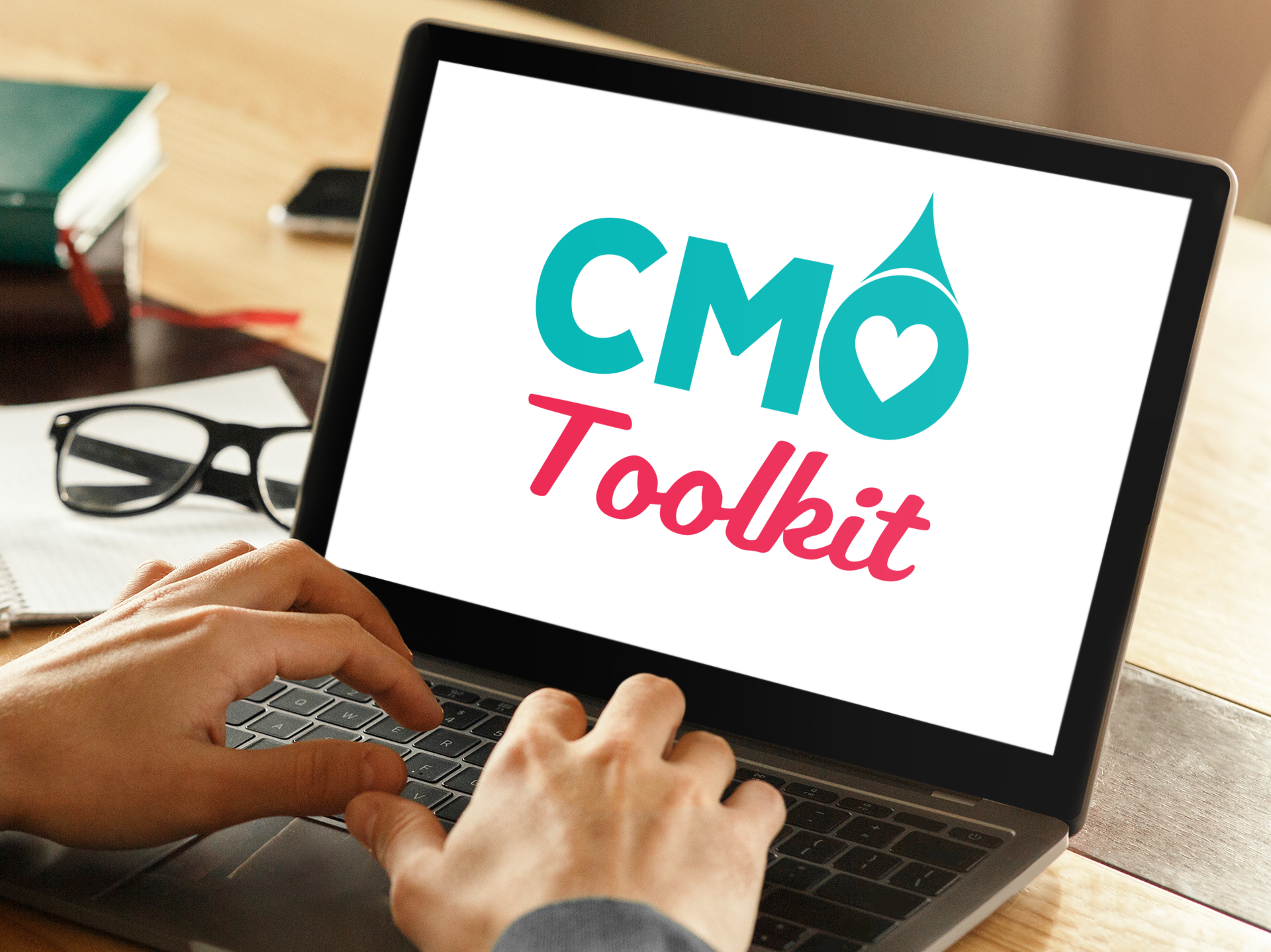
Subscribe to the CMO Toolkit
Would you like to get your hands on the tools, frameworks, templates, workshop packs, slides, and analysis tools we use with our clients? It’s all waiting for you.

Rachael Wheatley
Managing Director, Watertight Thinking
Rachael brings over 30 years’ of marketing experience, with a particular focus on building and developing effective marketing teams that are able to act as a strategic driving force across an organisation. She has worked with Watertight since 2014 as a Master Practitioner and joined the business as MD in 2022.



